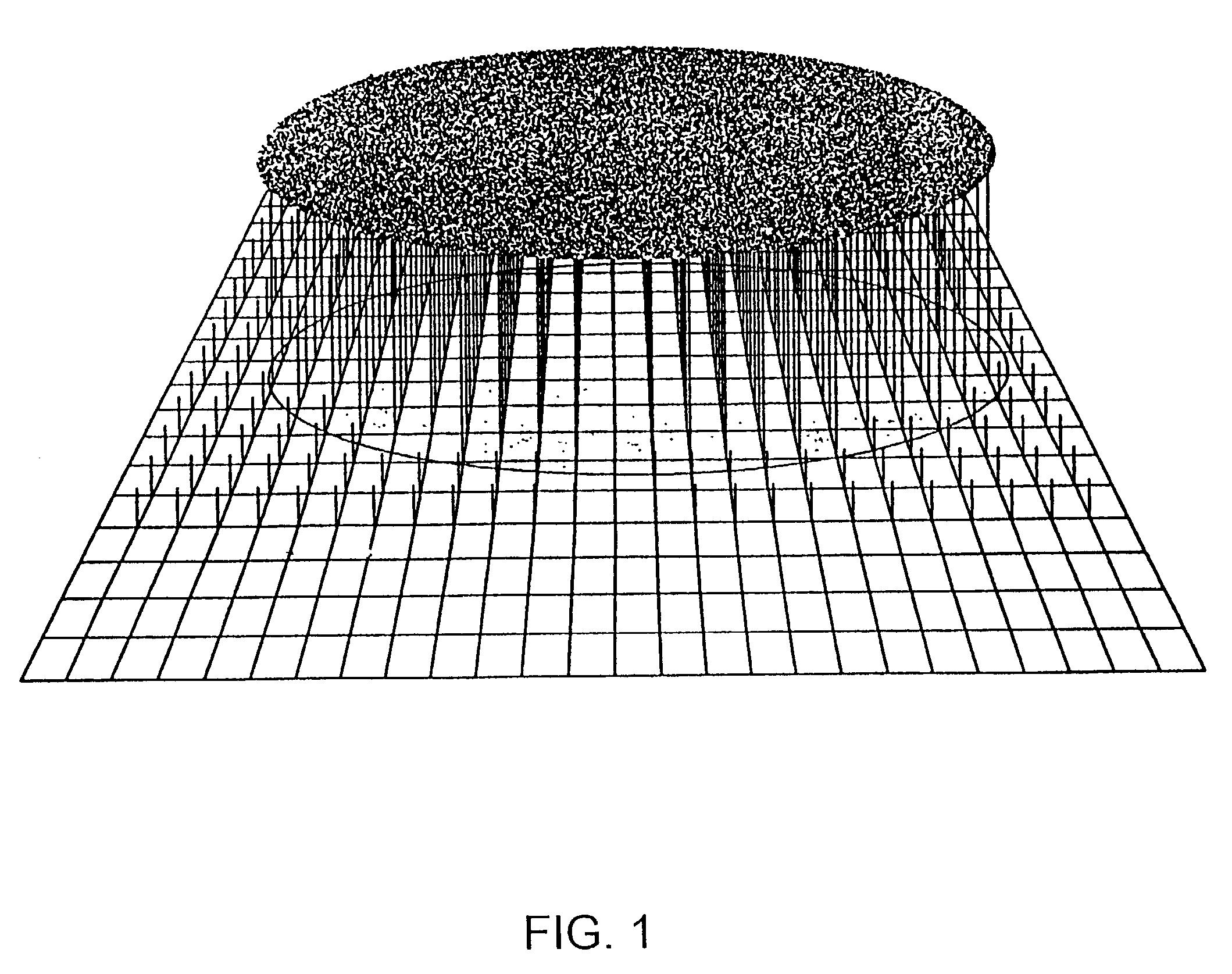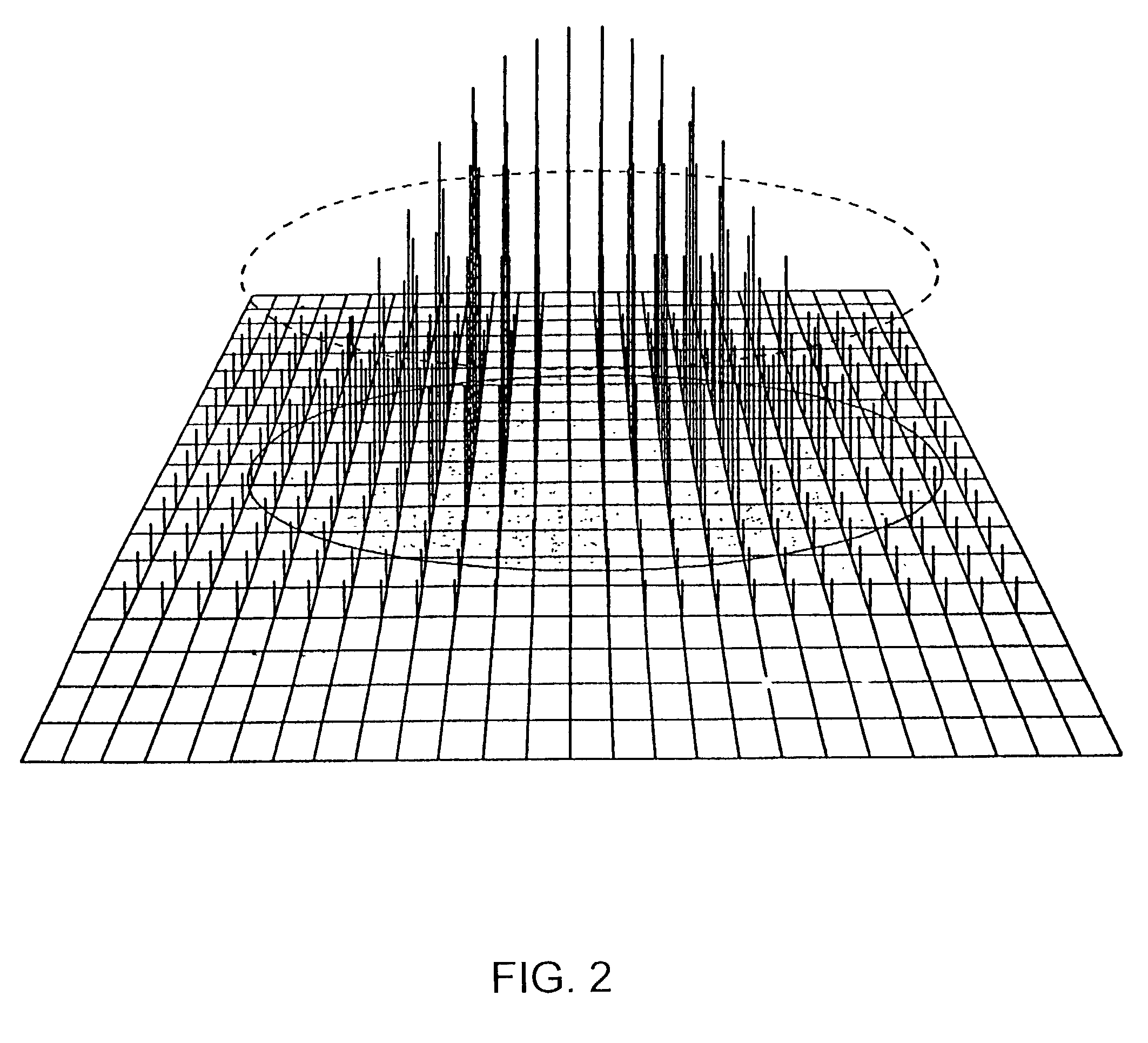Enumeration method of analyte detection
a technology of analyte and enumeration method, which is applied in the direction of color/spectral property measurement, fluorescence/phosphorescence, instruments, etc., can solve the problems of affecting the effect of measuremen
- Summary
- Abstract
- Description
- Claims
- Application Information
AI Technical Summary
Benefits of technology
Problems solved by technology
Method used
Image
Examples
example 2
[0171] Staphylococcal Enterotoxin B (SEB) Detection Assgy
[0172] Preparation of Whole Wafer Test Pieces. The test pieces used are commercially available 5' silicon (Si) wafers. Thin layer polyurethane coated wafers are produced using standard spin-coating procedures to lay the polyurethane on the reflective surface of the wafer. Briefly, the wafers are prepared by addition of 500 .mu.l of a thoroughly mixed 1.25% solution of Polymedica M1020 Polyurethane (Polymedica, Inc.) in N,N-dimethylacetamide (DMAC) (Sigma Chemical Co.) to the center of a silicon wafer (Addison Engineering) spinning at 5000 rpm. The wafer is air dried and then baked at 70.degree. C. for 16-20 hours. Next, a 10 circle by 10 circle pattern is applied to the non-reflective wafer surface using a 3.5" on 3.5" rubber stamp coated with RTV 108 silicone rubber adhesive sealant (GE Silicones, Inc.). The resulting circular outlines serve as a means to isolate each circular Polyurethane coated test spot (.about.0.25" diame...
PUM
 Login to View More
Login to View More Abstract
Description
Claims
Application Information
 Login to View More
Login to View More - R&D
- Intellectual Property
- Life Sciences
- Materials
- Tech Scout
- Unparalleled Data Quality
- Higher Quality Content
- 60% Fewer Hallucinations
Browse by: Latest US Patents, China's latest patents, Technical Efficacy Thesaurus, Application Domain, Technology Topic, Popular Technical Reports.
© 2025 PatSnap. All rights reserved.Legal|Privacy policy|Modern Slavery Act Transparency Statement|Sitemap|About US| Contact US: help@patsnap.com



